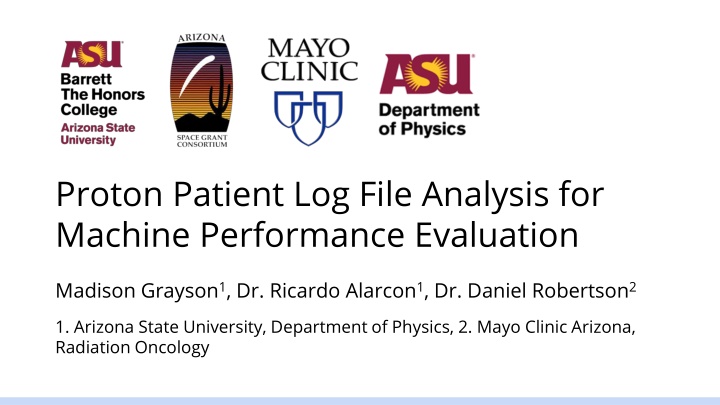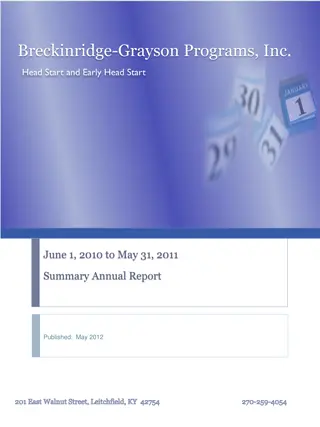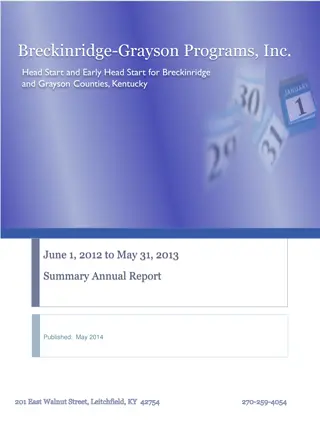
Proton Patient Log File Analysis: Machine Performance Evaluation
"Explore the analysis of proton therapy treatment log files for machine performance evaluation over time, identifying issues before they impact treatment quality. Results, methods, and conclusions are discussed, providing insights for future work in system monitoring and advanced metrics development." (261 characters)
Download Presentation

Please find below an Image/Link to download the presentation.
The content on the website is provided AS IS for your information and personal use only. It may not be sold, licensed, or shared on other websites without obtaining consent from the author. If you encounter any issues during the download, it is possible that the publisher has removed the file from their server.
You are allowed to download the files provided on this website for personal or commercial use, subject to the condition that they are used lawfully. All files are the property of their respective owners.
The content on the website is provided AS IS for your information and personal use only. It may not be sold, licensed, or shared on other websites without obtaining consent from the author.
E N D
Presentation Transcript
Proton Patient Log File Analysis for Machine Performance Evaluation Madison Grayson1, Dr. Ricardo Alarcon1, Dr. Daniel Robertson2 1. Arizona State University, Department of Physics, 2. Mayo Clinic Arizona, Radiation Oncology
Introduction Proton advanced types of radiation therapy therapy is one of the most As the protons slow down after entering the body, most of deposited at a specific depth their energy is Objective: Analyze treatment log files to identify machine performance over time trends Figure 1. Proton Bragg peak in water Identify machine issues before they cause downtime or degrade treatment quality Source: Cirrone, et al. [1]
Log Files Log files are produced from each patient treatment: Gantry Delivered spot position Gantry angle Monitor units (MUs) Provides a treatment record Used for patient-specific QA
Methods All patient treatment logs are stored in DICOM format Software was developed to extract the spot position, MUs, and gantry angle from all log files Mean spot position error and MU error were calculated for each delivered field A total of 22 months of treatments on 4 gantries were analyzed, including 43,807 total fields
Conclusions Daily/monthly QA measurements might catch these deviations Field-by-field data provides more continuous, granular description of machine performance Also more representative of machine usage than QA test patterns
Future Work Development of log file analysis metrics to preemptively diagnose performance issues Continuously monitor system performance Expand to use more detailed log files MU1 vs MU2 Spot size Delayed charge Magnet currents
Acknowledgements Niels Arnesen, Hitachi America Limited Larry Patnode, Hitachi America Limited Keith Furutani, PhD, Mayo Clinic References [1] Cirrone, et al.(2009). Dosimetric and clinical experience in eye proton treatment at INFN-LNS. 1120. 10.1063/1.3141651
Thank you! Any questions?






